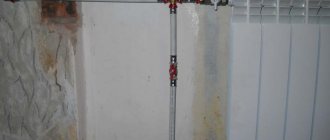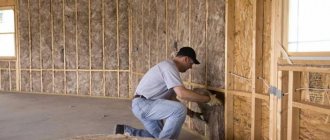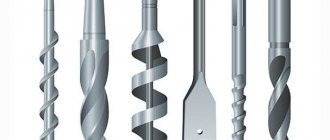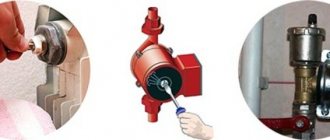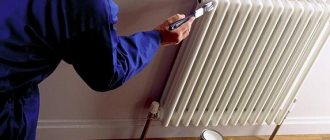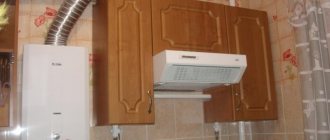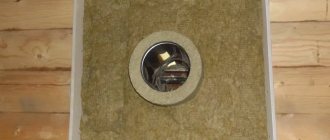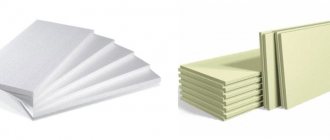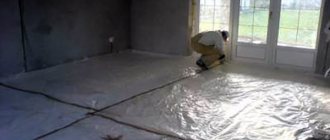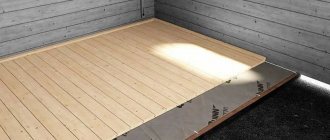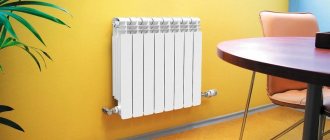Are cold floors the first and most unpleasant impression of your day? Everything can be corrected. It is only important to correctly “diagnose” the problem, because the matter is not always just the lack of a “warm floor” system or the unfortunate location of the room - everything is much more interesting. Now we will look at the main causes of cold floors and ways to correct this problem.
- 2 Reason No. 2. Dampness under the floor
- 3 Reason No. 3. Lack of insulation
- 4 Reason No. 4. Cold foundation
- 5 Reason No. 5. Laminate
- 6 Reason No. 6. Absorption of infrared rays
- 7 Reason No. 7. Tactile sensations
What materials are needed to insulate a cold floor in a private house?
Let's consider the most popular insulation materials:
Mineral wool. The most common material for home insulation. In addition to its low cost, it is easy to install, has good sound insulation, and low thermal conductivity. Disadvantages can scare away a potential buyer. High vapor permeability without installing waterproofing calls into question the feasibility of using mineral wool for home insulation. In addition, rodents liked it.
Ecowool
Low cost, environmentally friendly material, good thermal insulation attracts the attention of buyers. But the disadvantages are the same: moisture permeability, delicacy for rodents and flammability.
Expanded polystyrene
A good heat insulator, highly resistant, and does not allow moisture to pass through. The disadvantage is the same flammability. When burned, it emits many harmful substances, so it should not be installed in a residential area.
Plywood, sawdust, chipboard. Quite popular insulation materials. They are harmless to the premises, as they do not emit poisons when burned. There are shortcomings in thermal insulation and flammability, but otherwise they are acceptable for installation. The least popular: glass wool (inconvenient to use, harmful to the body), expanded clay (has a layer too thin for thermal insulation), polystyrene foam (high fire hazard).
When choosing insulation, each owner should focus on many indicators: what is the area of the room, are the windows insulated, the interior of the house, the material component, etc.
But most importantly, the insulation must qualitatively fulfill its characteristics declared by the manufacturer and warm the occupants of the room with warmth and comfort, give comfort and serve for a long time.
How to insulate a floor in a wooden house
In the table you will find not only a list of recommended insulation materials, but also their characteristics, advantages and disadvantages. The table will be useful to you if you have a cold floor in a private house; you don’t know what to do:
| Type of thermal insulation material | Advantages | Flaws |
| Mineral wool and ecowool | Naturalness, low thermal conductivity, high sound insulation, compactness (rolls or mats), light weight, easy installation, low cost | Low coefficient of moisture resistance, installation of an additional waterproofing layer, high fire hazard and low fire resistance |
| Fiberglass wool | Similar to mineral wool and ecowool. Contains glass fibers | It is necessary to use PPE - rubber gloves, safety glasses, a mask or respirator, clothing with closed sleeves and high shoes |
| Expanded polystyrene (PP) | Low thermal conductivity, high sound insulation and moisture resistance, light weight, easy installation, low price | Environmentally unsafe material, low flammability group (G4), toxicity when burning. Not recommended for use in residential areas |
| Expanded clay, wood shavings or sawdust | Natural, low thermal conductivity, does not allow street noise to pass through, simple and quick installation, low market value | When using expanded clay, wood shavings or sawdust, it is necessary to first equip forced and natural ventilation systems. Wood materials can become moldy and susceptible to fungal diseases |
Do-it-yourself floor insulation
It is quite simple to make a wooden frame from logs (wooden slats). Their size is chosen based on the thickness of the insulation.
In addition to the heat insulator, the log will need:
- wooden frame fasteners (dowels, screws, anchors);
- construction glue, mastic;
- waterproofing layer (in the simplest version - dense polyethylene);
- construction foam (if necessary, to fill gaps in hard-to-reach places).
The bottom layer of waterproofing is laid on the concrete base, after which the logs are attached to the concrete.
The pitch between the logs may depend on the cutting of the heat insulator; the optimal distance between the bars is 60 centimeters. Joists in apartments above wet basements can be additionally treated with water-repellent impregnations.
A heat insulator is placed in the gaps, which is covered with an outer layer of polyethylene on top.
A wooden floor base (finished floor covering) is attached to the joists. Ventilation gaps are left near the walls.
Technologies for improving thermal insulation
All floor reconstruction technologies using bulk, sheet, and block heat insulators are built on the principle of creating an artificial obstacle made of materials with low thermal conductivity in the path of cold air.
When planning insulation, you need to calculate their weight, volume, and method of placement.
The most popular is the construction of an additional volume under the wooden floor, into which heat insulators are placed.
Simple structures are built by laying a wooden frame (lag) under the floor, between which a heat insulator is placed.
A new floor is laid on the outer surface of the joist.
The disadvantage of this method is a significant reduction in the useful volume of the apartment - when reconstructing the floor, its height can increase up to ten centimeters.
For old apartments, an accurate calculation of the weight of the heat insulator is required, which may be excessive for worn-out floors.
Insulation of the floor in an apartment on the first floor
Cold floors are typical when living on the ground floor in an old housing stock. This is due to insufficient thermal insulation of basements.
In such houses, no measures were taken to improve waterproofing, so there is dampness from below.
Floors in apartments (linoleum, laminate) are laid directly on the concrete floor, without an air gap.
Apartments on the first floor suffer the most from the cold, giving off heat to the upper rooms and not receiving heat from below. The best methods of insulation are active (using heat, electricity, water) heated floors. In many cases, it is enough to improve the floor by laying a thermal insulation layer.
When the problem is not in the heating radiators
It often happens that the apartment is cold, although there are no cold walls, it is not on the first or last floor, and the radiators in it are very hot. Often the problem is draft. Yes, yes, an ordinary draft on a windy day may well lower the temperature in the apartment by 5-8 degrees, which is very noticeable.
You can fight this in different ways. If you have enough money and you have long wanted to carry out a major renovation of your home, you just need to replace the windows by installing plastic ones instead of wooden ones that have dried out over many years
It is worth paying attention to the entrance doors - are there any large cracks that cause drafts?
If everything is not as good with money as we would like, you can solve the problem with much less financial costs. Stock up on tape for window insulation - it is sold in many hardware stores and cotton wool.
Now all that remains is to fill all the cracks in the windows with cotton wool, carefully compacting it with a hard and sharp object (scissors, a screwdriver or a knife are quite suitable), and then seal it with tape. That's all. On the first windy day, you will notice that the room has become much warmer and more comfortable. And this with minimal financial losses.
What to do if the apartment has a cold floor
For starters, you can complain about cold batteries. But still, the way to solve this problem was and remains - to insulate and insulate the floor. The essence of insulating materials is their thermal insulation properties, which do not allow heat to escape outside the apartment. There are several options for insulation, let's look at the popular ones.
- Bulk materials. These include expanded clay, shavings and wood concrete. They have high thermal insulation properties and are relatively inexpensive.
- Glass wool/mineral wool (mineral wool). They are also effective in insulating floors, while the material is fireproof, is not subject to fungal infection and is hygroscopic (with mandatory vapor barrier).
- Expanded polystyrene or polystyrene foam. It has its advantages: moisture-resistant, does not ignite and is not subject to deformation, has sound-insulating properties and retains heat.
It is not possible to unequivocally answer the question of which material is better, since one must proceed from financial capabilities, the type of apartment and premises in it and their performance qualities and loads. If the apartment has wooden floors, then it is better to use mineral wool as insulation. This will save money and time. The only caveat is that polymer insulation (penoplex) is not suitable for wooden floors due to the increased flammable properties of both materials. It is more effective to use expanded clay on such coatings.
More often found in urban multi-storey panel buildings are apartments with concrete floors. It itself is a cold material, so in winter it can be cold in the apartment, plus leaky joints between the slabs, as a result - the floor becomes icy. It is interesting to know that 20% of heat loss from total heat loss comes from cold floors in apartments.
In the hallway and living room, the floor can be insulated using polystyrene foam, and in the bedroom and children's room it is better to use wood bulk material.
If the floor in the apartment is not very cold, what can you do without resorting to repair work with insulation. There are alternative options:
- Lay down a rug or rug. They have a low thermal conductivity coefficient; natural wool coatings have the greatest insulation properties.
- Lay the linoleum on a felt or jute backing, or on a foam base.
If you decide to install laminate in your apartment, then before installation you need to lay a special cork material, then you won’t have to wonder why the laminate is cold in the apartment and what to do.
So, in order for the floor to have a comfortable temperature, it is not necessary to use expensive heating structures; it is enough to properly insulate it using available materials. Find out why the batteries are cold at the bottom and hot at the top.
Pros and cons of different insulation materials
Each of the materials for insulating cold floors has its own advantages.
| Material | + | — |
| Mineral wool Ecowool | 1) natural material; 2) has low thermal conductivity and high noise insulation; 3) compact, available in different forms: rolls and mats; 4) light in weight; 5) easy to install; 6) affordable | 1) absorbs moisture well, and therefore requires waterproofing; 2) loved by rodents; 3) fire hazard. |
| Glass wool | Has the same advantages as mineral wool. Contains glass particles. This repels mice and other rodents. | Requires special protection of hands and other parts of the body from cuts from glass. This makes it inconvenient to work with. |
| Expanded polystyrene | 1) low thermal conductivity; 2) high sound insulation; 3) not exposed to moisture; 4) light in weight; 5) easy to transport and install; 6) has a low cost. | 1) synthetic material; 2) is easily flammable and melts, producing acrid smoke; 3) not recommended for use in residential buildings; |
| Bulk components: expanded clay, sawdust | 1) natural products; 2) excellent heat retention and sound blocking; 3) absorb and retain moisture well; 4) easy to use and transport; 5) cheap. | 1) good ventilation is required; 2) sawdust can become moldy and exposed to fungus |
When installing thermal insulation, plywood, chipboard, and OSB are used. They cover the insulation, creating a flat surface for the finishing sheet. These products serve as an additional means to maintain a comfortable temperature on the floor.
Installation sequence
- The infrared film is laid out in planned areas and attached to the floor using a stapler or tape along transparent edges that do not have a built-in wire.
- Recesses are made in the wall. Place the cable going from the thermostat to the thermostat.
- The places on the film in the connection area are thickened; for them it is necessary to create technological recesses artificially.
- The starting point of installation is located on the opposite side from the power connection points. Leave a free space of 20 centimeters from the walls.
- Connect the copper ends to the thermostat using the cable and contact clamps included in the kit. Secure with pliers and isolate.
- The clamp is placed between the film and the wire. The IR strips are connected near the wall. When extending them, wires of the same color are connected to each other, followed by insulation, and additional fastening with tape.
- The cable is routed inside the corrugation. It is sealed with a film, protecting it from moisture.
- After completing installation, check the functionality of the entire structure using a portable sensor.
Useful video on installing electric floors
Installing additional heaters
If all measures for insulation and decoration do not bring the desired result, the “heavy artillery” comes into play, that is, a variety of additional radiators and convectors, of which there are a great variety today. If possible, the most obvious and practical solution would be to replace the old batteries with a new model that has greater heat dissipation, an attractive design and the ability to regulate temperature.
Decorative shelf-radiator, Vanixa
In addition to replacing stationary heating radiators, you can use additional options, for example, installing a flat convector. This convector is mounted on the wall and can operate continuously. Inside the convector there is a solid-cast heating element, which ensures silent operation and quick heating of the room to the desired temperature without changing air humidity.
Convectors are compact, which is very important, Galletti
One of the most progressive heating options today are infrared heaters and panels. Their fundamental difference from other models is that they ensure uniform circulation of warm air throughout the entire room, and not just near the radiator itself. This effect is achieved due to the fact that a quartz lamp in the form of a long tube is installed inside the metal case, while you can either equip the room with built-in infrared panels or connect a portable heater.
Compact infrared radiator-bedside table, Infrared
Compact and practical solution - infrared radiator on the ceiling, ATH Italia
If the lack of heat in the house is a temporary phenomenon, for example, before the start of the heating season, it is enough to acquire a compact electric fan or an oil radiator. They are mobile and relatively inexpensive, but they dry out the air, which has a negative impact on health, and consume quite a lot of electricity. It is better to have this option as an additional safety net in case of a sudden cold snap, and maintain a constant temperature in the room through other means.
Portable oil radiators in different sizes, S&P Italia
We briefly looked at different options for maintaining a comfortable temperature in the house during the winter. Of course, these decorative techniques are unlikely to replace high-quality repairs, but by combining our various tips, you will be able to make winter evenings much warmer and more comfortable for the whole family.
Thermal insulation of a wooden house - how to eliminate major heat leaks
A wooden house is considered environmentally friendly and warm. But if it is unexpectedly cold, or heating costs are relatively high, then there are structural defects and increased heat leaks. Insulating a house made of wood is usually a little cheaper because the walls themselves have increased resistance to heat transfer compared to cold materials.
How thermal insulation measures are taken in this case, what is necessary to create comfort and warmth - a few practical recommendations...
Wooden walls are not warm enough
Wooden walls with a thickness of only 20 cm are comparable in thermal insulation properties to polystyrene foam (expanded polystyrene foam) with a thickness of only 5 cm.
The heat transfer resistance of such a design is less than required by the standard for most of our regions. And for cold climate zones - much less!
The SNiP requirements for a temperate climate would be almost achieved if the walls were made of 40 cm thick timber. Then there is definitely no need to additionally insulate them.
But a house with such walls can still be cold if there are obvious heat leaks through other structures. It is advisable to insulate walls made of timber (logs) 20 cm thick, but only last, after maximum heat saving has been achieved with other structures.
Why the house is uncomfortable - low heat capacity
Another question is that the temperature in the house changes quickly, “jumps” following external changes and when doors are opened, so the feeling of comfort is lost.
The reason for this phenomenon is that wood has a low heat capacity. In the old days, there was a massive stove in the middle of the house, which served as a heat accumulator and stabilizer of the internal microclimate.
There must be a “pile of stone” inside a modern wooden house. You shouldn’t trust smart ventilation and air conditioning systems to regulate the microclimate. Because you still can’t get rid of the feeling of discomfort and the toy-ness of your home, and the costs for this are by no means small.
The role of a temperature stabilizer inside the house can be performed by partitions made specifically from brick, concrete screed - heated floors, fireplaces, or simply massive (tons of stone), heat-intensive interior elements.
Not only the buffer tank stabilizes the temperature of the home. It is better to take care of the internal heat capacity and create massive structures inside. How to make a heated floor screed
It is necessary to find places of energy leaks
To solve the cold issue, you need to carefully consider the state of the thermal protection as a whole. It’s a good idea to look at the house through a thermal imager in cold weather when it is heated. But even without this device, based on the condition of the structures, the thickness of the material and its type, it is quite possible to figure out how the heat is lost.
For wooden walls, the issue of having cracks everywhere and high air permeability of the walls is important. The phenomenon can be combated using different methods, such as sealing cracks and using continuous membranes or finishes... How best to insulate such home fencing can be found on this resource.
Heat leakage through windows and doors, their insulation
If the frames are old, then most likely they will be the main culprits of the cold in a wooden house. A through gap is a very serious heat leak. First of all, you need to eliminate the draft. Heat escapes with improper ventilation
The solution to the problem of insulating windows and doors is simple - installing modern systems. Moreover, it is necessary to install double glazed windows with sprayed glass and double doors. But this requires a lot of money...
Old windows and doors are usually repaired
You can repair old frames and doors yourself. The procedure is as follows.
- 1. Seal all glass. It is important that there are no gaps on either the inside or outside. You need to remove the glass from the frames and reinsert them, sealing them around the perimeter with sealant or window putty.
- 2. Caulk all cracks in the frames, both outside and inside. The same sealant and synthetic fabric and tow are used.
- 3. If the doors will open, they must be equipped with a seal, which can be mounted in a special groove along the contour of the door, or glued at the point of pressure. Naturally, this is a mandatory rule for doors, since a draft from under the door can remove all the heat from the house.
- 4. Often significant cold enters the house through the door if it is not insulated. The minimum thickness of insulation for any door is 5 cm of extruded polystyrene foam. If the door is still not insulated, then the easiest way is to stick the specified insulation on it, and then cover it with any decorative material.
We insulate the ceiling
In an ordinary house, the ceiling plays a very important role in the thermal protection of the entire building. After all, warm air, as you know, rises straight up from heating devices and primarily heats the ceiling. If it is not insulated, then the room will simply be cold, regardless of any insulation of other structures.
The ceiling (usually wooden flooring) needs to be insulated from the attic side. Polystyrene foam is not recommended for use due to the fact that it is extremely dangerous in case of fire if it is located indoors.
Most often, the ceiling is insulated with mineral wool - 15 - 30 cm layer, depending on the climate. But you can also use natural, cheap materials mixed with lime to make them biostable.
A 30 - 50 cm thick layer of hay, straw, leaves, or a combination thereof is used.... How to insulate with straw and leaves
It is important that the corners and edges of the attic are properly insulated.
Vapor barrier and other design features
When insulating the ceiling, you need to take into account that a large amount of steam tends to escape from the house through it, which poses a threat to the insulation, since condensation will occur right inside them, and water may accumulate.
Therefore, the ceiling is covered with a continuous vapor barrier (polyethylene, polypropylene) membrane. It can be placed between the logs with a twist to a height of 10 cm.
A layer of insulation is laid on top of the membrane. If you use mineral wool, it must be covered with a vapor-permeable (diffuse) membrane on top so that the fibers do not fly apart.
In general, if you want to make the house warm, then you need to work thoroughly on the attic floor, and the thickest layer of insulation should be used here - the heat transfer resistance of the ceiling should be almost 2 times greater than that of the walls.
The floors are made warm
Insulating wooden floors is not difficult. You just need to make a decision - whether to build a second floor higher than the first or tear down the floors and lay insulation on the ground or between the joists.
In general, the second option is more acceptable for economic reasons, and a significant reduction in the height of the room when raising the floors is not always suitable.
So, the boardwalk is removed so that it is easy to put each board in its place.
The soil is a source of moisture, and the first thing that needs to be installed is a vapor barrier. The same materials are used as for the attic, but here it is safer to put two layers of roofing felt with a twist on the walls above the floor level. If the underground is not at all high, then it makes sense to pour the insulation directly onto the ground (on the vapor barrier layer). Straw-leaf options can be used in a 25 cm layer, expanded clay or coal slag screened from the stump in a 35 cm layer.
Placing insulation between joists
If the underground is high, then it is better to place insulation between the joists. A layer of 15 cm of glass wool, without phenolic binders or ecowool - cellulose wool, is suitable. First, beams are screwed to the bottom (side) of the joists, a flooring is made of thin boards, plywood, slate... on which a vapor barrier is laid.
A layer of mineral wool (ecowool, etc.) is separated from the interior of the house by a vapor barrier. This prevents steam from escaping into the insulation and also protects the room from harmful substances.
Moisture from the insulation should be carried out by air outside when the underground is ventilated.
The humidity in the underground should not be increased.
When the underground temperature under the joists reaches sub-zero temperatures, the thickness of the insulation must be increased by a third.
Mineral wool with a density of up to 80 kg/m3 can be blown through with air flow, so it is covered with a superdiffusion membrane.
Walls made of logs and timber are sometimes insulated...
After insulating windows, doors, ceilings and floors, as a rule, the issue with cold is resolved radically for the better. But sometimes wooden walls fail.
The culprit is the gaps between the logs or beams. Just like in the old days, they need to be caulked. Previously, moss was used for this, now hemp, jute, they need to be stuffed with a sharp tool from the outside and inside into the cracks.
For the best insulation and maximum savings on energy resources, you can bring the thermal insulation of wooden walls to the standard value - 3.3 m2C/W for a temperate climate in the middle zone, you can additionally insulate all the walls from the outside with a layer of mineral wool of 5 cm or more.
Wooden walls cannot be insulated with polystyrene foam, since its resistance to steam movement is much higher than that of wood. The basic principle of wall insulation - a vapor-permeable layer on the outside - will be violated. Which threatens the wood getting wet and rotting.
Application of mineral wool for walls
The technology of wall insulation with mineral wool involves the creation of a ventilated facade. How to insulate wooden walls
Mineral wool is applied to the walls between the beams, additionally attached to them with cables, plastic dowels, and covered with a diffusion membrane.
Then a ventilation gap is created above the layer - between the insulation (the membrane of which it is covered) and the external finishing panels. To do this, additional bars are packed onto the sheathing bars, to which the siding or any other external decoration is directly attached.
It’s not difficult to do this with your own hands, it’s only important to set a single plane for the location of the sheathing beams and the horizontality of the cladding panels...
As you can see, you can insulate a wooden house inexpensively if you use the cheapest insulation materials and do the work yourself. But if you don’t have the time or desire to do it, then you still need to know how to properly carry out thermal insulation measures in order to control the work of specialists.
Insulation from the basement
The best solution is to insulate the floor slab on the basement side. In other words, it is necessary to insulate the ceiling in the basement, thus moving the cold and dew point away from the floor in the apartment.
To carry out such work, it is better to coordinate with the housing office. There are usually no problems with this. Having received such permission, you can begin thermal insulation work. The following methods are available for this:
The simplest, inexpensive, but at the same time quite effective method is to insulate with foam plastic. The foam sheets are glued to the concrete base with liquid nails. At the end of the work, all the gaps remaining between the sheets should be filled with polyurethane foam. Since the basement is often damp, and polystyrene foam tends to become saturated with moisture over time, it is necessary to waterproof it. To do this, a thick polyethylene film is glued to the insulation sheets with the same glue. The edges of such waterproofing must be overlapped by at least 10–15 cm.
You can spray polyurethane foam - one of the most reliable and durable insulation materials known today. After hardening, this material has high strength and excellent thermal insulation properties. Also, polyurethane foam does not burn and does not absorb moisture at all. The only disadvantage of this option is its rather high cost: spraying is carried out using special equipment and requires professional operator skills.
Concrete floor
Concrete is durable and therefore very often used as a floor. However, this material is very cold. Therefore, in those houses where it is used, careful thermal insulation is required on the first floors. Otherwise, any heating will not be able to warm up properly.
Apartment owners must do the insulation of the concrete floor of the first floor with waterproofing, since dampness often forms in the basement, as a result of which, without appropriate work, mold will appear on the walls.
Instructions for carrying out work
The process begins by preparing the base. To do this, you need to remove the entire coating and check the slabs for cracks, chips and cracks. If there are defects, they are eliminated with a special solution based on concrete or cement. After the surface hardens, it is treated with a special impregnation that strengthens the layer.
Next, waterproofing should be done. Polyethylene film is quite suitable here. It should extend onto the walls by about fifteen to twenty centimeters. A special deep penetration primer will also cope with the task.
To install the insulation, a frame is made. To do this, beams are laid, and under them - pieces of roofing felt. Logs are placed on the bars, and the entire structure is attached to concrete.
After this, you can install bulk insulation alone or in combination with a liquid version. Mineral wool is placed on top of it in the cavity of the structure. You can also use foam or other material.
How to insulate cold floors in a private house
Insulation of a wooden floor in an old house
Preliminary work
In an old house, you can insulate a cold floor without touching the walls and other parts of the building.
Remove old boards. They examine them and throw them away, rotten and rotten. Those that are not destroyed are left and used again. Checking the condition of the underground part
It is important to determine whether the subfloor boards, joists and other wooden parts are well preserved. Rotten elements are removed to be replaced with new ones. While the floors are being dismantled, you should check the ventilation vents, the condition of the subfloor and, if necessary, carry out work in this part of the house
Sometimes it is necessary to remove excess soil or, conversely, add soil. After a thorough examination, new beams are installed or old, well-preserved logs are treated with a special protective compound. Then a subfloor is laid from substandard or second-rate unplaned boards. They are also impregnated from rotting and damage by rodents. Next, insulation measures are carried out.
Main works
It is better to insulate a cold floor in a wooden house with natural materials based on cotton wool. If the house is located near fields and is attacked by field mice and domestic rodents in autumn and winter, you should prefer glass wool. You will have to experience inconvenience during installation. But this will guarantee that the floors will last for a long time.
- A cage is mounted on the rough flooring or slats are nailed in increments of 40 cm.
- Next, waterproofing is laid - plastic film. The canvases are overlapped, not stretched, and secured with tape. The edges are folded up, extending onto the walls by about 10 cm.
- Thermal insulation material is placed in the spaces between the slats. It needs to be secured. It fits well into the space allotted to it and acquires the required shape and size.
- Lay any vapor-proof material tightly on top.
- Then lay plywood, chipboard, OSB or floorboards.
- The finishing coat is placed on top.
If houses are insulated with bulk material to insulate a cold floor, waterproofing is not done. Expanded clay and wood waste absorb excess moisture well and are not subject to destruction. Sawdust compresses over time and prevents heat from escaping.
Insulation of cold concrete floors
Warm floor system
A concrete slab on the floor of a house is a good base for installing a heated floor system.
After removing the old coating, the concrete is cleaned of dust and dirt, cracks and chips are covered, and the surface is leveled. To install a water system, pipes are laid according to the diagram and connected to a heating boiler or a special device where the water will be heated. Infrared mats are laid according to the manufacturer's instructions
It is important to provide for the location of additional outlets to provide them with power. Water insulation is covered with plywood and other leveling sheets. The infrared system is covered with a thin layer of cement screed, waiting for it to harden. Next is the finishing coat.
With such a concrete floor arrangement, the house will always be warm and comfortable.
Insulating a cold floor using the traditional method
A heated floor system may seem expensive to some homeowners. To save money, you can go the route of insulation, as with a wooden base.
- Slats or boards are attached edgewise to clean concrete. It depends on the height that can be taken from the ceiling.
- Expanded clay is poured behind the waterproofing layer (sawdust is not suitable) or mineral wool is placed.
- Everything is covered with plywood sheets or boards. The latter should be connected to each other as tightly as possible and fixed with self-tapping screws. This flooring is impregnated with a special protective compound.
- Laminate, parquet, carpet and linoleum are laid on a plywood base. The boards are coated with varnish, mastic or decorative paint.
When building a new house, all insulation measures are carried out by laying the foundation and pushing out the walls. here the design features of the building should be taken into account. If the house will stand on screw piles or a columnar foundation, a thermal insulation system is required. Otherwise, there will always be a cold floor in your home.
All work on insulating the lower surface of the house can be done on your own. Knowing the basis of the technology and following the advice of experts, you can get rid of the problem with cold floors forever. To keep your feet warmer, use carpet or lay carpet runners for the finishing coating. This is especially true for bedrooms and children's rooms.
Reason #1. Crevices
The first and most common culprit for cold floors is cracks. So what should you do if the floors in your dacha are exactly like this? Try this interesting option, especially popular back in Soviet times. Cheap and cheerful, as they say:
- Step 1. Seal the gaps between the boards with putty. Yes, you can use the most ordinary store-bought paint, paint it with regular floor paint and leave it like that - but it won’t work. The fact is that a person puts pressure on the floorboards with his weight, and they eventually bend - which is why both the putty and the paint fly off quite quickly. That’s why we make putty in our own way: mix finely sifted sawdust with PVA glue (for furniture). Fill the cracks with this compound, having previously lubricated the edges of the floor slats with the same PVA. Stolyar glue is also suitable due to its water resistance.
- Step 2: Now use the blade of an ax to cut away the exposed old paint chips on the floorboards and lightly sand the entire floor with medium grit sandpaper.
- Step 3. In individual problem areas, secure the boards with self-tapping screws. Just “sink” the caps themselves and fill the holes with the same mixture as the cracks.
- Step 4: Thoroughly vacuum the entire surface.
- Step 5. Now purchase thin paper wallpaper with a wood texture (any other option is possible, of course).
- Step 6. Roll out the rolls in a convenient place and cover with a thin layer of parquet varnish (dilute it a little with solvent). This is necessary so that the wallpaper becomes more durable when wetted with PVA glue, also thinly diluted with water. In addition, otherwise the texture of the wallpaper may also be erased during smoothing. And stains will appear from accidental touches. By the way, we varnish the textured surface.
- Step 7. Now we cut individual sheets of wallpaper - the same width as each individual board.
- Step 8. Apply glue to the boards and place the prepared sheets. If the gap is still noticeable, then lightly press the paper into it. But each stripe must overlap the next. By the way, if the varnish between the strips bursts, this will only add decorativeness to the entire coating, imitating a real plank floor.
- Step 9. Press the paper strips tightly and smooth them with a clothes brush to remove air bubbles.
- Step 10. Use a clean rag to remove excess glue.
- Step 11. Let the new floor dry for at least three days. After this, we cover it with parquet varnish in three layers.
This is what it looks like:
Here's what to do when the gaps are too large:
This floor will serve you for a surprisingly long time, but you will forget about drafts through the cracks forever.
But if things are really bad, do this:
And in the absence of funds, like this:
Insulation materials
The list of thermal insulation materials used in construction and repair technologies is quite large.
In terms of efficiency and ease of installation, the best heat insulators include:
- synthetic materials (foam plastic, penoplex, expanded polystyrene, teplex);
- modern wood fiber insulation;
- mineral wool;
- fiberglass;
- gypsum fiber sheets;
- liquid ceramic heat insulators.
In modern practice, bulk heat insulators are practically not used. The oldest of them, sawdust, is susceptible to rotting, mold, and is a fire hazard.
The good thermal insulation properties of expanded clay are offset by the large weight of the bulk material.
Wood-fiber sheet materials and liquid ceramic heat insulators have proven themselves to be excellent, but they are expensive.
Fiberglass materials are quite heavy and can clump together and cause allergies.
Mineral wool slabs are also quite expensive. Thermal insulation properties are ensured by the low thermal conductivity of fibers from the melt of volcanic basalts, diabase, and porphyrite.
For simple self-insulation, synthetic heat insulators are most acceptable, from a wide range of which you can make your own choice.
Proper floor design
Let's divide all the questions on this topic into two large groups - for houses with floors on wooden joists and for houses with floors on reinforced concrete floors.
There is also a separate group of houses in which the floors of the first floor are located above warm basements and a group of houses that have floors on bulk soil. This group of houses is not particularly affected by the problem of cold floors, since underneath they have “heating” either from the basement or from the ground, which (if you don’t let it freeze) has a stable temperature of +4 degrees Celsius.
For reinforced concrete floors, insulation is usually done with polystyrene foam in several layers. All insulation must be carried out OUTSIDE, that is, from the outside relative to the room. This applies to both the base and the floor. The blind area is also insulated with penoplex. The insulation sheets must fit snugly against the base insulation sheets. In the case of an unheated basement, you can not insulate the entire basement wall, which goes underground, but only its above-ground part. Naturally, in this case the blind area of the house must also be insulated. The width of the insulation of the blind area depends on the depth of soil freezing in winter for a given region. The width of the insulation of the blind area should be greater than the depth of soil freezing.
Sheets of insulation are laid between the wooden joists or insulation that does not come in the sheets is filled in/blown in. To insulate floors on wooden joists, you can use basalt wool in sheets and bulk, ecowool, and polyurethane foam.
Why are the floors cold? Review of the 7 main reasons
Are cold floors the first and most unpleasant impression of your day? Everything can be corrected. It is only important to correctly “diagnose” the problem, because the matter is not always just the lack of a “warm floor” system or the unfortunate location of the room - everything is much more interesting. Now we will look at the main causes of cold floors and ways to correct this problem.
Common causes of floor cooling and how to fix them
The temperature of floors is influenced by 3 components: the object under the floor (base or room), thermal insulation and floor covering, its material and condition, and temperature is directly related to the level of humidity. Sometimes the reason may lie in one of these factors, sometimes in a combination of them.
Cold pulls from the base
The floors are located too close to the cold base - soil or concrete, and there is no insulation layer between them or its thickness is insufficient. The problem is especially acute in winter, when the ground or uninsulated foundation under the floor on the first floor freezes. The problem can be solved by raising the floors, thoroughly insulating the space between the floor and the base, as well as the foundation or basement.
It's damp under the floor
Typically, this problem occurs in the spring in private homes, when the winter-frozen underground floor begins to thaw and condensation accumulates.
A layer of waterproofing under the insulation should protect against dampness from below. Sometimes it is necessary to close the side ventilation holes - vents - in the basement so that dampness does not penetrate there from the street, and instead install a ventilation grille above the basement, in the floor. If the floors are saturated with moisture, you need to wait until they dry or use equipment such as a heat gun to speed up the process. But the coating may become deformed as a result.
Lack or insufficient floor insulation
We need better thermal insulation, made in accordance with the calculations, we also need to take care of the hydro- and vapor barrier of the insulation, and if there are mice under the floor, think about a way to deal with them and seal the passages.
There are cracks in the floor
If the floors are planks and the boards do not fit tightly together, cold will draw in from below through the cracks and heat will flow out of the house (apartment), dampness will also penetrate through them. The cracks can be sealed with putty, and to prevent new ones from forming, the loose boards can be secured with self-tapping screws. It’s even better to complement these operations by laying dry screeds made of plywood and other board or sheet materials.
Cold flooring
You can solve the problem using a heated floor system, but you need to choose it correctly for specific conditions. High-quality thermal insulation must be provided under the heated floor, otherwise it will not be the room that is heated, but the subfloor.
Reason #2. Dampness
Dampness can create a lot of worries for every owner of a private household and apartment located on the lower floors. This is due to the fact that in the spring, damp and cold air enters the basement, after which it enters the unprotected insulation. First of all, you need to protect the insulation itself, at least with the most ordinary polyethylene board. If you experience such a phenomenon as dampness on a regular basis, you should organize ventilation of the basement.
Important! Please note that the cause of cold in the house can also be mice, which make numerous passages in the walls and floor. Therefore, if there is a risk of harmful rodents, it is better for you to install various mousetraps in advance or simply get a cat.
What to do if there is a cold floor in a private house
- The only correct solution would be to insulate the floor.
- If the house is under construction, then you need to take care of its thermal insulation in advance. When people already live in the house, the solution would be to build up the floor or dismantle it. It all depends on your desires and financial investments.
- First of all, check the vent in the basement of the house. It should be tightly closed during the winter cold.
- Carefully examine the absence of gaps between the first crown and the base of the house.
- Take a closer look at the ceiling. According to experts, the main reason for drafts and cold floors in the house is a poorly insulated ceiling. The ceiling is insulated - the problem is solved.
- Install the “Warm Floor” system. But if the external space is not properly insulated, it will bring little benefit.
Eliminating the cold floor problem
If the floor in a private house is cold, then you should not rush to call repairmen - you can fix the problem yourself. The correct option is floor insulation. Several simple technologies have been developed for this:
- Before choosing a method for insulating the floor surface, it is recommended to check the ventilation system in the basement level of the building. At the beginning of autumn it is tightly closed. It doesn’t hurt to check the connecting level between the base and the walls of the house for any cracks, gaps or cracks. If necessary, insulate them with caulk, construction foam or other methods, for example, pouring a concrete solution;
- Check the ceiling surface in the same way. Warm air always rises to the ceiling, and there it is much easier for it to find a gap for leakage to the street. Therefore, if the floor in a private house is cold, then first of all it is necessary to insulate the ceiling;
- Insulate cold floors with available thermal insulators. We will talk about them below;
- Install “warm floors” based on liquid coolant or electric heating. But, if the insulation of the floor, ceiling and walls is not done or is carried out poorly, the heat transfer efficiency of the heated floor will tend to zero.
For concrete and wooden floors, the insulation scheme and the thermal insulation materials used will be different, so you should not replace them!
Warm floors from hot water
Installation of water heating is a step-by-step observance of the entire cycle from the beginning to the launch of the system into operation. The length of the pipe is determined by calculation, depending on the area of the room.
Advantage
- Provides uniform heating of the entire floor.
- The pipes are hidden and do not change the aesthetic perception of the interior.
- A closed cycle of hot water from central heating does not affect overall utility costs.
- Properly selected materials will not rust, which guarantees the system a long service life without leakage.
Equipment
- Metal-polymer or polymer pipes (preferably corrugated, bendable).
- Thermal insulation.
- Fastening elements.
- Manifold with fitting for connection to the battery.
- Damper tape attached to the wall along the perimeter, within the height of the structure.
- Reinforcement mesh.
- Aluminum plates.
Warm floors with artificial coolants
Warm water floors are rarely installed in city apartments, requiring autonomous heating, a large amount of installation work, and weight calculations of the structure.
Electric thermal, infrared heating of polos is more rational. Warm floors with electric heating take up minimal usable space and do not require complete reconstruction.
The significant cost of an electric heated floor (about $100 per square meter) often forces residents to equip them only with cold plumbing rooms, although installation is possible throughout the entire apartment.
Types of insulation
Expanded polystyrene
Polystyrene sheets with grooves for insulating and leveling the floor
Expanded polystyrene, better known as polystyrene foam or its modified counterpart penoplex, has excellent thermal insulation properties, is lightweight and easy to use. There is also extruded polystyrene foam. Its difference from the usual one is that it is waterproof. If ordinary polystyrene foam can absorb a certain amount of liquid and become deformed due to temperature changes, then its more technologically advanced form is almost completely waterproof. The only disadvantage of polystyrene foam is its flammability.
Expanded clay
An example of different types of expanded clay used for insulation.
This bulk material has an attractive price and is universal. Can be used for dry floor screed or mixed with cement mortar. You can also use it to create a floating screed with your own hands.
Polystyrene concrete
Unlike expanded clay, polystyrene concrete requires a much smaller layer to create acceptable insulating properties. You can lay almost anything on it, including tiles. In addition, it has excellent sound insulation properties. You will learn more about this material from the video.
Mineral wool
Mineral wool, as well as glass wool, are some of the most popular insulation materials, which are made in the form of tiles or rolls. The advantages include thermal insulation properties, reasonable price and vapor absorption. The disadvantages are that the composition is hazardous to health. When installing it yourself, you should use respirators and avoid contact with exposed parts of the body. Therefore, mineral wool and glass wool need careful insulation to prevent dust from penetrating into the premises.
Cork
Cork is used as a backing for laminate flooring and as an insulating material.
Cork material is perhaps the most expensive on our list. It is environmentally friendly, durable and moisture resistant. It can be used even for fine finishing, because in addition to its insulating properties, it looks beautiful as a topcoat. Disadvantages include instability to cuts and other mechanical damage.
Ecowool
It is made on the basis of cellulose, which means it is environmentally friendly and not hazardous to health. It has high heat and sound insulation properties, but does not tolerate moisture. Therefore, it is used in areas where there is no risk of contact with moisture. For more information about the advantages and disadvantages of ecowool, watch the video
Penoizol
This is liquid polystyrene foam, all the advantages of which we talked about above. The advantageous difference between the liquid form of such material is its ability to penetrate into the most inconvenient places.
Warm floor
Installing an electric heated floor
The option of installing a heated floor is becoming increasingly popular. The only thing that puts me off is its cost. There are several variations:
- Water;
- Electric;
- Infrared.
Water heated floor, heats with the help of hot water communications under the subfloor. Electric underfloor heating is also installed and heats by converting electricity into heat. Infrared is the most modern, simplest option and can be installed with your own hands without the involvement of specialists. Thin underfloor heating elements are laid under the finishing flooring. Only this type of floor can be realized with your own hands, without special skills.
Self-leveling floor
This coating is used not only as decorative, but also as insulation for the floor, especially on the ground floor. Special mixtures guarantee thermal insulation and waterproofing, as well as fire safety.
They are made from environmentally friendly materials that can be installed independently.
Installation instructions
Before starting installation, it is important to properly prepare the base.
- whatever the rough surface is - concrete, wood, ceramic tiles or cement screed, it must be carefully checked;
- seal cracks, cracks, loose elements, dismantle and replace;
- clean the entire coating;
- sand wood and concrete;
- Prime the floor generously so that all pores are completely closed;
- a day after this you can start laying.
The prepared mixture is simply poured out of the bucket and leveled with a spatula. The entire room is covered at once to create a flat surface. At the end, to avoid the appearance of bubbles, you need to go over the entire coating with a roller with needles. Polyurethane varnish is applied to the dried floor.
How the cover is the warmest
Cork is the warmest. This is an expensive, elite material that can be laid in any room, except in places where there is high humidity. It is strictly forbidden to lay cork on a bare concrete floor. This coating can be produced in the form of slabs or rolls. In order to make laminate or linoleum flooring warmer, cork is also sometimes placed underneath it. It provides excellent thermal insulation and protects against extraneous noise.
Cork does not react to temperature changes and can withstand severe loads. It is not static and does not accumulate dust and hair. Carpet looks very similar to carpet. It can be quite hard and soft. This flooring is convenient because it has a low risk of injury, which is why it is often installed in children's rooms. Carpet can be made from either natural or artificial materials. This is a warm covering that will reliably protect your feet from the cold floor.
Reason #5. Laminate
Despite the general belief that laminate is a rather warm coating, in fact, this is not the case at all. The main reason that laminate floors are cold is the high thermal conductivity of the finishing layer. There are two ways to solve this problem: you can put an infrared film floor under the decorative coating itself or a technical cork, which has high heat-preserving properties.
Base primer
Polyurethane
The second name of the composition is epoxy primer, which has the ability to penetrate deeply into concrete. Apply the component to the screed with a roller. Work along the perimeter of the base with a brush. No spaces allowed. This type of primer is effective for adhesion to self-leveling floors (self-leveling), preventing the formation of fungus and moisture penetration.
Concrete contact
This is a composition of acrylic with quartz sand. Apply with roller and brush. After priming, a rough surface is formed on the base, ensuring tight contact with the subsequent layer. Acrylic in the composition makes the film resistant, preventing moisture from entering the concrete. After 4 hours, from the moment the composition is applied, the next stage of insulation begins.
Stages of work on installing thermal insulation
The house is installed directly on the ground.
- make a layer of sand or crushed stone under the ceiling;
- build a wooden floor as a rough option;
- a layer of waterproofing is laid;
- place a heat insulator between the joists (parallel wooden boards).
- a vapor barrier layer must be installed on top.
- finished floor with the obligatory leaving of a gap for ventilation between it and the heat insulator.
The cold floor is located above the basement. In this case, it is necessary to increase the floor by a few centimeters.
- A waterproofing agent is placed on the cleaned subfloor.
- Logs are laid on top.
- Insulation is laid between them.
- Then comes the underlay and the finished floor.
Little tricks:
- if there is a basement under a cold floor, then before starting the insulation procedure, take care of the thermal insulation of the basement walls;
- do not forget about ventilation when installing insulation;
- Do not save money on purchasing a vapor barrier and waterproofing material:
- Do not forget to treat wooden boards with an antiseptic.
Thermal insulation option
- On the side of the upper floor, we lay thermal insulation material between the beams in one or several layers.
- Cover with waterproofing film.
- We put joists on top of the beams, arrange a rough floor, and then a finishing floor.
- On the side of the lower floor we make a vapor barrier layer, which we install on the boardwalk.
- We cover the vapor barrier layer with hemming boards or plasterboard boards.
How and with what can you insulate the floor?
Regular polystyrene foam
The brand of slabs is selected depending on the expected load on the floor. To insulate a living space, a PSB-S-35 slab is sufficient. It can have milled edges or regular ones. To overlap the slabs, preventing the formation of gaps and cracks, it is better to use regular polystyrene foam with milled edges.
The insulation is placed either in two thin layers or in one thick one.
Extruded polystyrene foam
Insulation with polystyrene foam
It has a denser structure with well-closed cells. Thanks to this, it is able to withstand heavy loads. It can be safely used not only in a living space with large furniture, but also in a garage.
Since the insulation boards are very dense, they can be laid directly on a layer of expanded clay or gravel without first making a concrete base. The low coefficient of water absorption and thermal conductivity allows the use of extruded polystyrene foam for insulating floors on the ground. In this case, the thickness of the thermal insulation layer can be only eight centimeters.
Polyurethane foam
Rigid slabs and polyurethane foam shavings can be used to insulate floors on the ground. But they need to be laid on a layer of waterproofing, since the water absorption coefficient of polyurethane foam boards ranges from 0.6 to 2.9%.
Modern materials are coated on both sides with fiberglass or an aluminum layer, which reduces vapor permeability and significantly increases the thermal insulation characteristics of the slab. The edges of polyurethane foam boards can be straight or milled. The latter are used for laying overlapping insulation.
Mineral wool
It is soft and fibrous, therefore it is often used for insulating floors above the underground or between floors. The layers that are placed under and above the mineral wool must be insulated with vapor barrier and waterproofing layers.
Expanded clay
Granular, light and porous, which is made from crushed and fired clay. In a thermal insulation structure, expanded clay performs several functions at once: leveling, heat-insulating and moisture-absorbing. If the layer is thick, additional waterproofing may not be necessary.
Expanded clay is used for insulating floors on the ground. To simplify subsequent work, it is recommended to pour a liquid cement-sand mixture over the compacted layer of expanded clay. Such fillings can be done on each expanded clay layer.
Why are there cold floors in private homes?
There are several reasons why the floors are cold in a wooden house.
- The design of a wooden house is prone to change: the wood is deformed, the structure settles. If you rush and lay the floors before they shrink completely, they will warp and be cold.
- The natural wood from which floorboards are made deteriorates over time and dries out. Gaps form. Cold air flows through them, which cools the floors. If the house is old, then it is understandable why the floors are cold.
- In a new house, it will be cold on the floor if mistakes were made during its installation.
- If the flooring is laid on a concrete base, which gets very cold in cold weather, then walking on it will be uncomfortable.
To properly insulate floors, you need to know the reasons for their cooling.
Wooden floor
Modern high-rise buildings no longer have wooden floors. But they can often be found in old-type houses.
Wood is a warm and environmentally friendly material, but over time it tends to dry out, causing gaps to form in the floor. And they cause drafts. Therefore, it would be correct to further process such coatings.
Insulation technology
To insulate the ground floor, you need to perform the following steps:
- dismantle the old coating, check and, if necessary, replace it, and if it is in normal condition, it can be put back in place;
- treat the surface with antifungal antiseptics and allow to dry;
- install insulation and cover it with a vapor barrier film;
- A board is laid on top of the surface.
